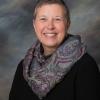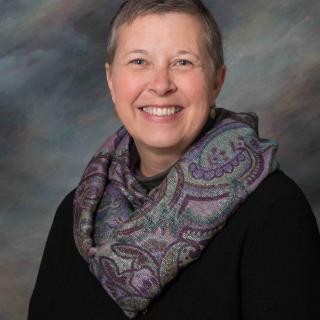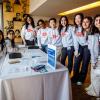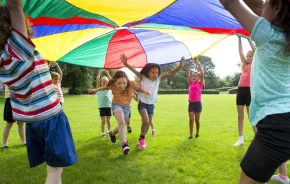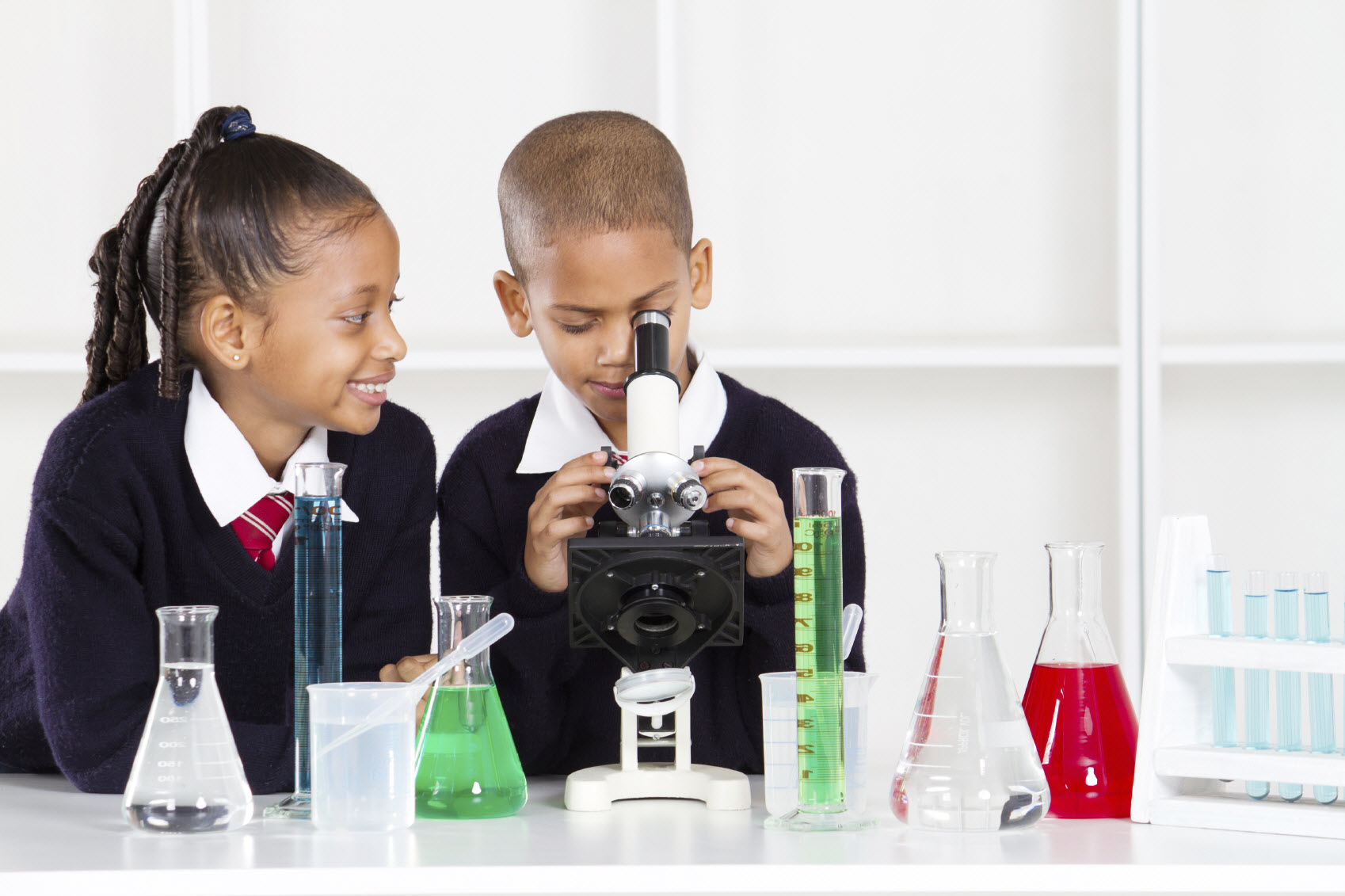 With the crime scene taped off, the body was isolated in a classroom.
With the crime scene taped off, the body was isolated in a classroom.
Evidence of pills and blood splatter were nearby. Was it a case for the local police department’s forensics team?
No. It was a case study for Leah Sams’ biomedical class at Coons Rapids High School in Minnesota, a STEM (Science, Technology, Engineering and Math) project in the making.
Over 25 weeks, the students in Sams’ class investigated this staged death, using a mannequin for a body. They performed lab analyses on pills found near her body. They made fingerprint and footprint comparisons. They used fake blood drops with viscosity similar to real blood, released at various drop-heights to determine the splatter effect at various trajectories. They then compared those lab analyses to the drops found at the crime scene.
“The class really enjoyed the blood spatter lab,” said Sams. “They also enjoyed the body temperature lab, where they calculated various temperatures, made inferences based on how long it took to get the victim’s body temperature when found, and completed a graph on the results.”
All of this work was strictly hands-on, project-based learning, using a realistic experience — an example of what many experts say is the necessary future of math and science education.
Across the nation, STEM is the buzzword in education, reflecting a marketplace reality that is helping to transform schools: Science and engineering jobs are expected to grow by 17 percent from 2008 to 2018. Over the next 10 years, STEM jobs should grow three times faster than non-STEM jobs.
This trend has implications for students and current and future job-seekers. Over the past three years, unemployed people outnumbered online job postings by an average of three to one, according to Change the Equation, a nonprofit, CEO-led initiative to mobilize the business community to improve STEM education in the U.S. But that equation looked very different across STEM fields, where there were twice as many available jobs as people to fill them.
Not only are there not enough qualified candidates to fill STEM jobs, the fields lack women. So, along with the push for increased STEM education in the U.S., there has been a corresponding effort to encourage STEM learning for girls.
Although the number of STEM programs is too numerous to track, and there is no complete STEM program database, the good news is that thousands of STEM programs exist across the U.S., according to Change the Equation’s Christina Gordon.
STEM specialty schools, such as Brunswick Early College High School in Bolivia, N.C., K–5 STEM at Boren School in Seattle and the Technology, Engineering and Communications (TEC) High School in the Highline School District, near Seattle, are generating student interest in STEM fields, thus changing the face of science education.
Most notable is that today's science classes no longer depend on a textbook or a lab with archaic Bunson burners. The most unique aspect of STEM education is that it relies on project-based learning, in which students focus on real-world, hands-on projects like examining cadavers, building anemometers and creating robots. Kids are behaving like scientists, roboticists and forensic experts.
Project-based learning in STEM
Project-based learning (PBL) is not unique to STEM. Think about the dioramas of your childhood, complete with exploding volcanoes, and you’ll realize that there’s a longstanding tradition of students working on school projects.
But STEM educators kick it up a notch. With the help of curriculum provided by organizations such as Project Lead the Way, today’s STEM students are building, collaborating and analyzing, just like real STEM professionals.
As part of their STEM learning experience, they are also exposed to professionals in the field who can serve as mentors and provide workplace experiences.
PBL has been shown to help kids retain information better and for longer periods of time and to demonstrate improved communication and collaboration skills.
In addition to Project Lead the Way, the National Science Foundation (NSF) and the Museum of Science in Boston have developed STEM curricula. There is also a vast array of online STEM resources for students to tap into, found courtesy of Edutopia, NASA, How Stuff Works, Engineer Girl and GEMS (Great Explorations in Math and Science).
No matter what the resource, the key aspect of PBL in STEM education is that students are actually doing the work and coming up with real results.
The STEM learning curve
There is a learning curve in this relatively young academic discipline, not just for students, but also for teachers, says Dr. Shannon McKinney, principal at Seattle's K–5 STEM at Boren. The school uses NSF science kits for science curriculum, the Singapore Math curriculum, and Engineering for Elementary, a curriculum developed by Boston’s Museum of Science.
For McKinney, the most challenging aspect of implementing a STEM curriculum has been to reach a common vision of what STEM learning should involve.
Her teachers were up for the challenge.
"We knew that we wanted to integrate and present concepts in a project-based learning model,” she said. “It takes time to be effective, so teachers must have adequate time to plan and collaborate across grade levels and curricula.”
North Carolina’s Brunswick Early College High School science teacher Claire McLaughlin loves teaching science through project-based learning. “I want my students to know that you can’t find science just in a textbook,” she said. “You have to figure it out, experiment with it, test it, and answer questions about it.”
Good scientists, adds McLaughlin, learn by creating a model of what is happening in the world, and they are constantly refining this model as they acquire more evidence.
The benefits of partners and mentors
But teachers can’t do it alone. In many STEM schools, partners or mentors can help demonstrate just how viable STEM careers are for students, especially girls. According to a 2011 report issued by the U.S. Department of Commerce's Economics and Statistics Administration, although women comprised 48% of the workforce in 2009, they held only 24% of STEM jobs. Men made up 52% of the U.S. workforce in 2009, but held 76% of STEM jobs.
Seeing and hearing what men and women are doing in actual work environments helps illuminate to students what STEM careers actually look like.
To find career partners, Principal Kelly Raymond of TEC High School created an advisory board of professional engineers to mentor and help lead his school's STEM efforts. They meet once a month and look for ways to create field experiences and internships for TEC students. The leader of the group is a female engineer who volunteers her time to meet with students, especially girls. Raymond has also had engineers from the University of Washington visit her classrooms and meet with students.
At Langston Hughes Middle School in Reston, Va., Life Science teacher Megan McKinley started the GEMS Club (Girls Excelling in Math and Science) to help spark girls’ interest in STEM. In GEMS, McKinley matched middle school girls with a naturalist from the Reston Association for a nature walk.
During Clinic Day, the students focused on a physiology experiment. Not only did they examine X-rays, use a stethoscope and take blood pressures, they also talked to a female doctor. During Engineering Day, students met with Exxon engineers. Finally, for Take Apart Day, girls met scientists at Nova Labs and then took apart old computers, scanners, cameras and a Xerox copy machine.
Mentorships also exist outside of school, through programs such as Engineer Girl, Pacific Northwest Girls Collaborative Project and Techbridge Girls. A number of schools and communities offer GEMS programs, including Seattle, which offers science mentoring to public school girls in grades 7 and 8. These programs can be invaluable in urging girls towards STEM education and careers.
Collaboration is key
K–5 STEM at Boren's 4th and 5th grade students took a field trip to Seattle’s Center for Wooden Boats, which led to the creation of a scale model of Native American village. Students made maps and recreated wooden boats out of cattails, integrating engineering, science, Native American culture and history concepts into these lessons.
At Brunswick Early College High School, Claire McLaughlin’s students partnered with eight schools in Australia to work on a water project. They learned about their own local water system, collected data and then compared their data to their Australian counterparts'. They also visited a water-treatment and wastewater-treatment plant. In project-based learning, says McLaughlin, lab work comes first, then students figure out the concepts, because “this is what real scientists do.”
Finally, in a combination kindergarten–first grade classroom at Boren, students made anemometers to measure wind speed. When she visited the classroom, McKinney says students were thrilled to tell her about their work, the mistakes they had made and how they made it better.
“To me it was exciting to hear that they had learned from mistakes,” said McKinney. “I think that one of the mistakes that we as educators make is always talking about having the right answer.” At her school, she says, students are encouraged to make mistakes and urged to find ways to make their projects better.
So if educators, parents and professionals want to entice students to enter STEM fields, we will all have to first acknowledge that it takes more than just sitting at a desk with a No. 5 pencil and a worksheet.
With PBL, STEM students go beyond the textbook and experience science, engineering, technology and math with their own eyes, hearts and minds.
They go out of the classroom into a lab or a workshop.
They build, create, learn, make mistakes and get their hands dirty.
Just like in real life.
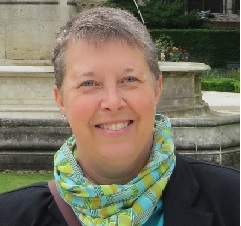 Rebecca Hill is a freelance writer who writes about education, literacy, libraries, parenting/family and science. She has been published in a variety of national and online publications. She lives in Zionsville, Indiana, and is the mother of two high school boys.
Rebecca Hill is a freelance writer who writes about education, literacy, libraries, parenting/family and science. She has been published in a variety of national and online publications. She lives in Zionsville, Indiana, and is the mother of two high school boys.



